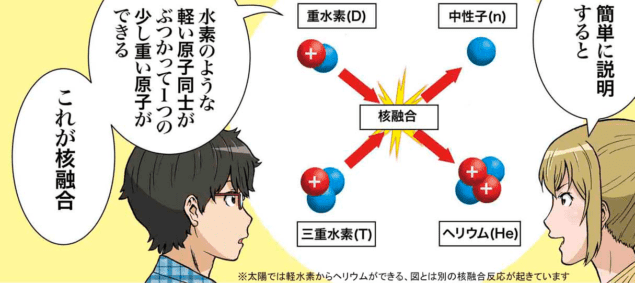
Art meets nuclear fusion in A Small Sun on Earth, which is described as the first manga about ITER – the nuclear fusion reactor currently being built in the south of France. Published with the support of Japan’s ITER contingent, the illustrated story describes a lunch shared by a Japanese art student and a French physicist in a town near ITER. Physicist Soléane explains her work at ITER to artist Taiyô Tenno, who is in town to visit Cezanne’s workshop. Japanese and French versions are available, with English coming soon.
Are music fans’ movements during a rock concert the same as those of fans during a football match? To answer that question, seismologist Jordi Diaz from the Jaume Almera Institute of Earth Sciences in Barcelona installed a seismometer in the basement of the institute’s building in 2016, which is near to FC Barcelona’s football stadium. Speaking at the European Geosciences Union General Assembly in Vienna this week, Diaz revealed that he could pick up signals from football fans jumping up and down when their team scores – and even as they enter and leave the ground.
Different dancing
He picked up a rather large signal in March 2017 when Barcelona were playing Paris Saint-Germain in a Champions League knock-out game. Trailing 4-1 from the first leg, Barcelona scored in the final minute of the match to win 6-5 taking them through to the next round and sparking wild celebrations. Diaz also studied the signal generated from a Bruce Springsteen rock concert in the city in 2016, finding that the seismometer could even differentiate songs because fans danced differently depending on the rhythm of a song. And as the music fans’ movements are more coordinated than those of the football fans, the seismometer could also differentiate between the two forms of activity. Yes, but what happens when football fans start dancing?
Anyone who swims in the sea or surfs knows that it is very easy to get disoriented and end up much further along the coast than you expected. Normally, this just means a long walk back along the beach but straying from safe waters can also be very dangerous. Now, four teens from Cornwall – Ellie Jones 15, Jessica Knight, 15, Summer Jeffery, 14, and Emily Haddrell, 14 – have come up with a proposal for a GPS wristband that can track swimmers and surfers to help prevent them from ending up in dangerous waters.
Compelling new ideas
Their idea is one of nine winning entries in the SatelLife Challenge, which is run by the UK Space Agency and aims to “to improve life on Earth by exploring compelling new ideas for satellites”.
The Cornish team bagged £7500 for best group project, while Ieuan Higgs, 20, from Wiltshire takes home £7500 for best individual project. He won for his idea of using satellites to understand how urban areas are changing by monitoring the construction of new buildings. The seven runners-up will receive £5000 each and all nine groups will now be able to pitch their ideas to a panel of industry “dragons”.



